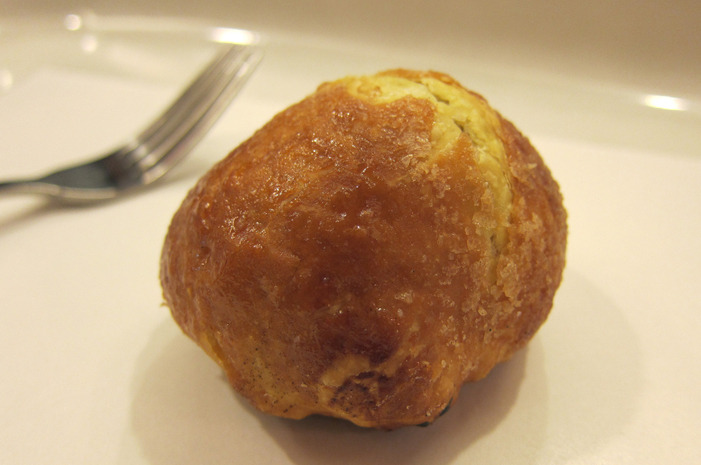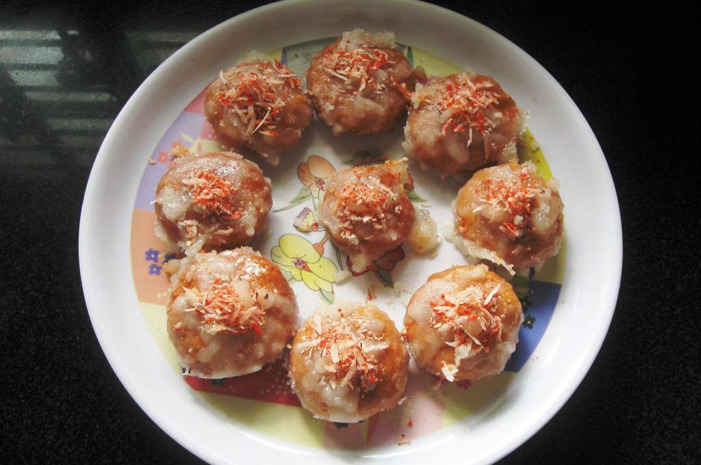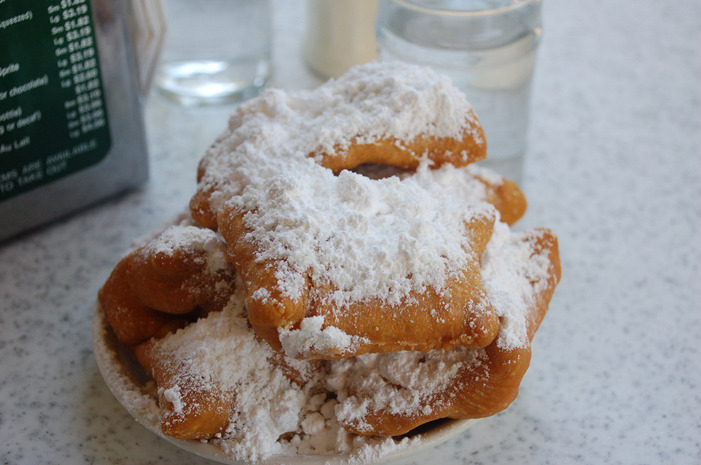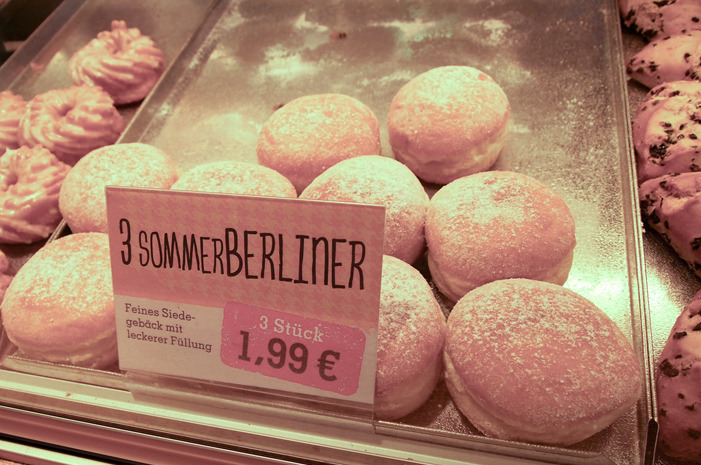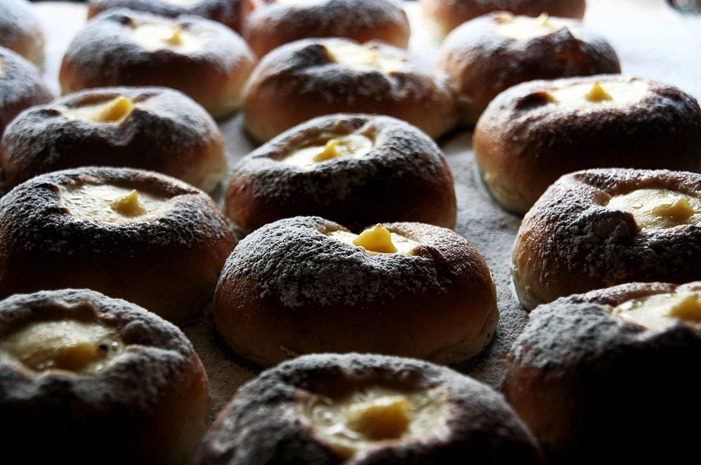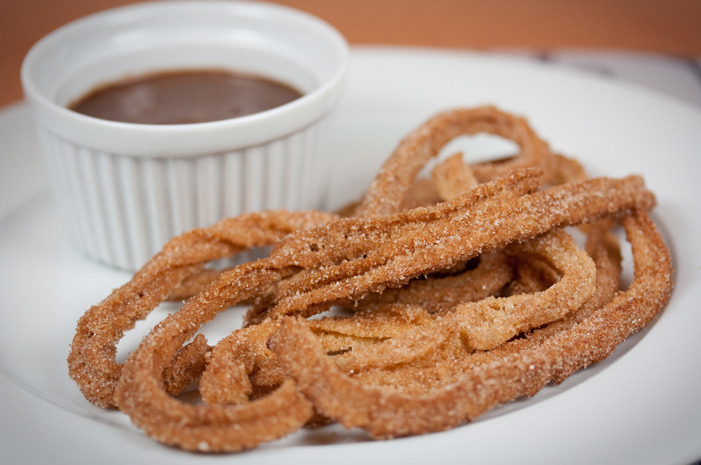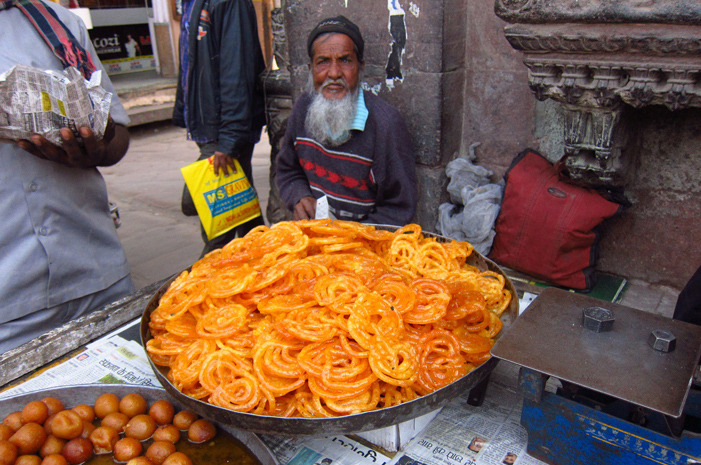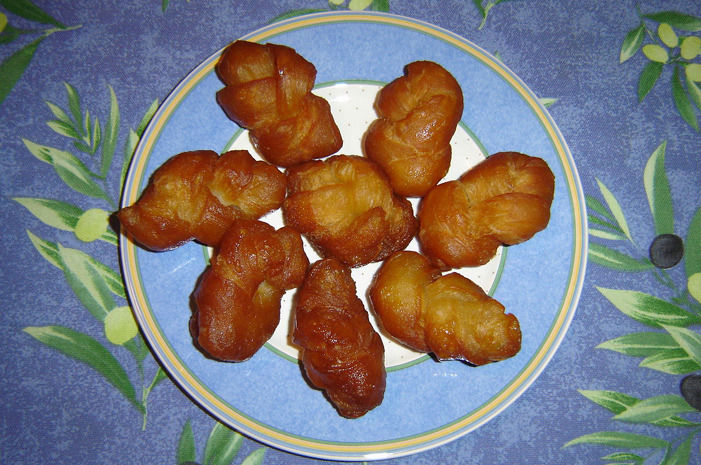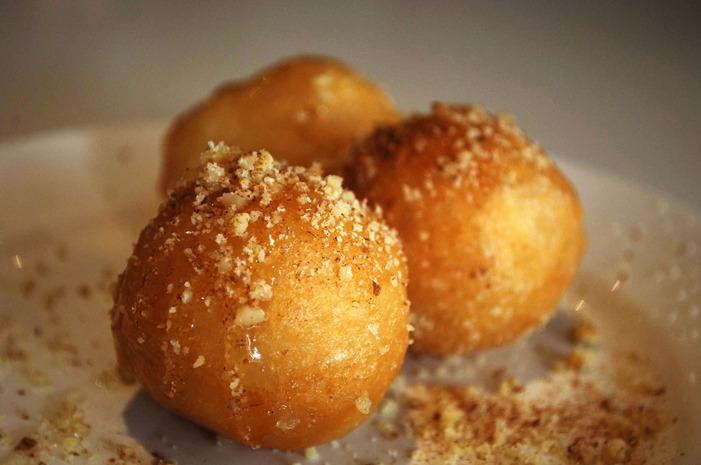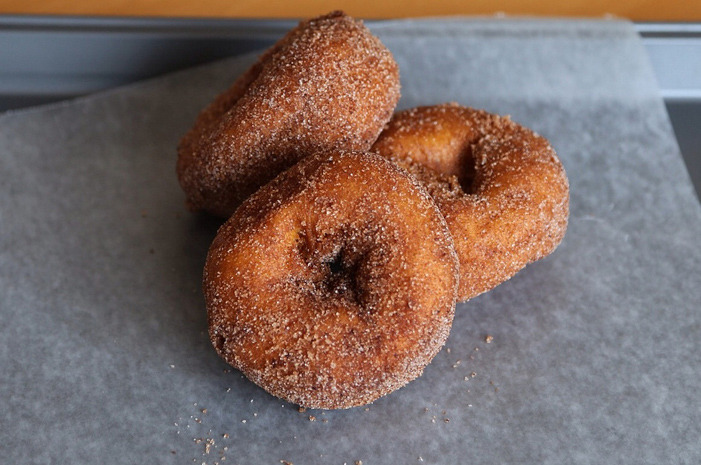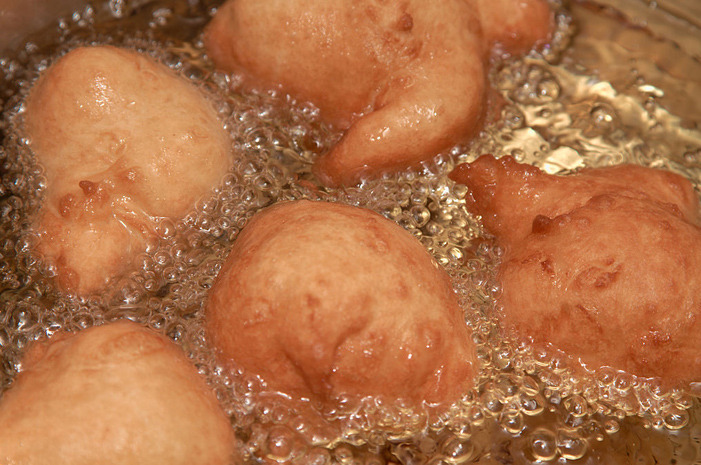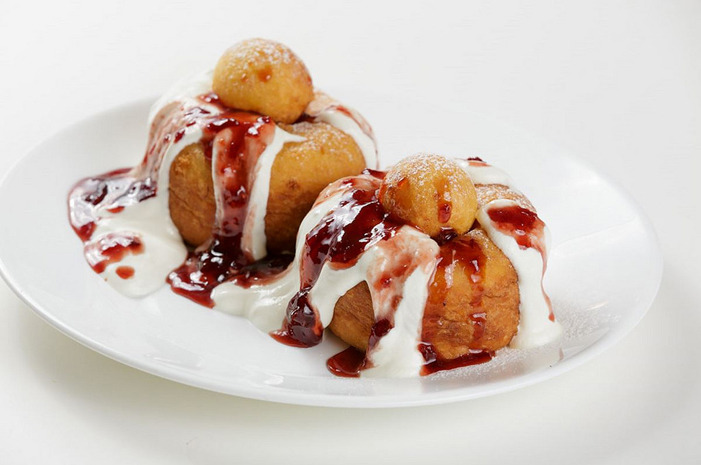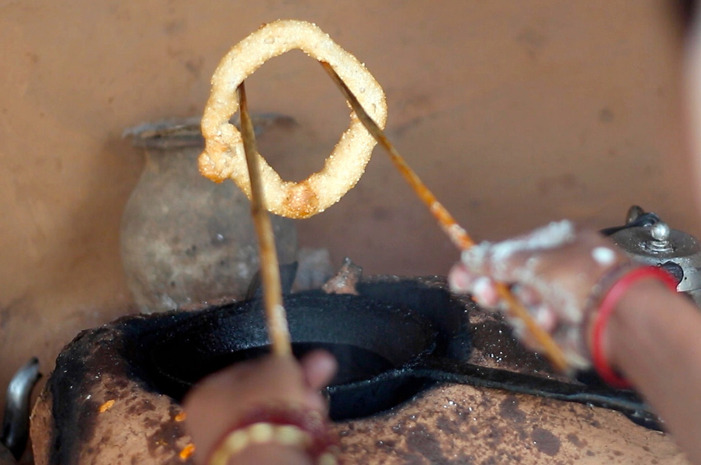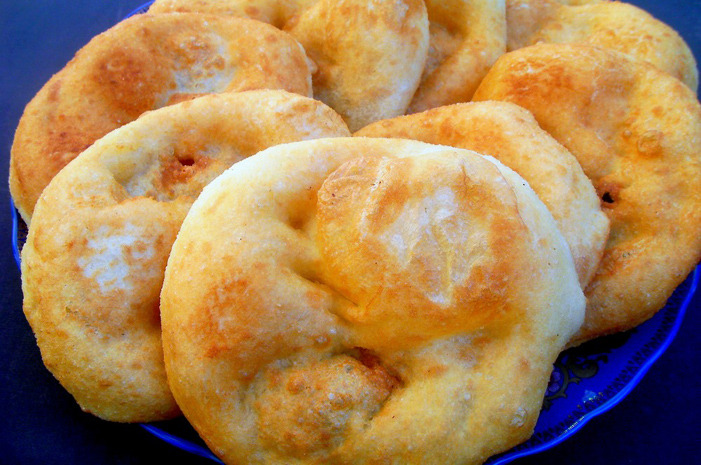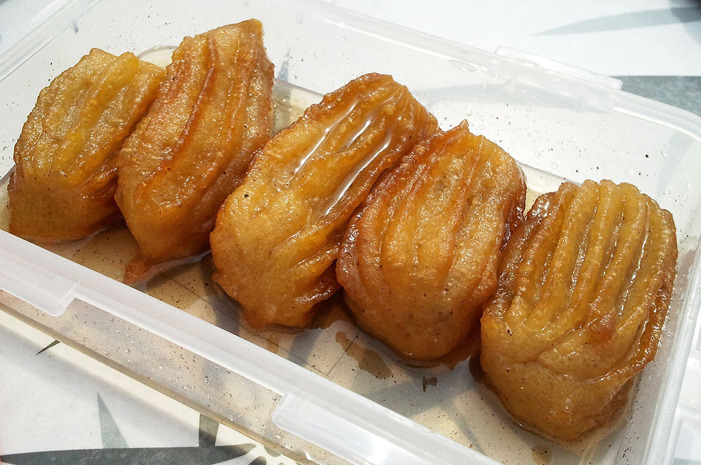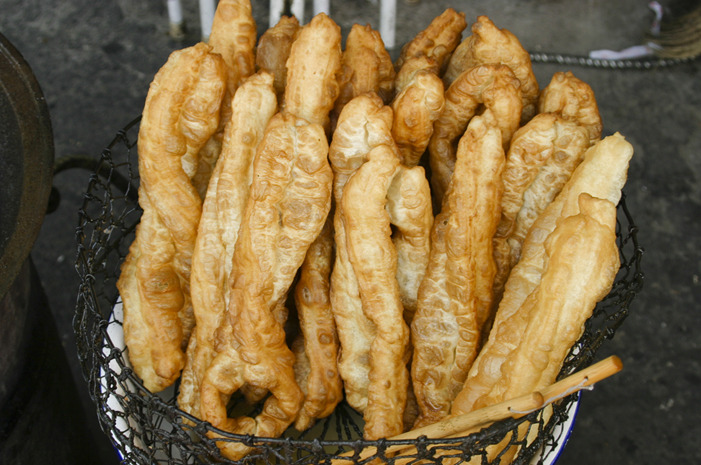17 Kinds Of Doughnuts Around The World Slideshow
Circular pieces of fried dough with holes in the middle aren't the norm when it comes to doughnuts around the world. The French beignet is a square without a hole, often topped with sugar, and churros, from Spain or Portugal originally, but now popular throughout Latin America, are long tubes of dough dusted with cinnamon. In China, youtiao, which look like sticks of fried dough, are often dunked in soy milk for breakfast. Dutch oliebollen, on the other hand, usually incorporate raisins as a filling and are a popular New Year's Eve snack. Cultures around the world incorporate fried dough into their cuisine, and we've rounded up 17 variations for your culinary enlightenment.
An (Korea, China, and Japan)
Red bean is a common ingredient in Asian cuisine, and it's used as the filling for this yeast doughnut topped with sugar.
Balushahi (Northern India, Pakistan, Nepal)
Beignet (France)
These popular pieces of fried and raised dough originated in France. They're square, with sugar or icings as a topping. (French-style beignets are also popular in New Orleans.)
Berliner (Germany)
Bomboloni (Italy)
Churros (Spain, Latin America)
Churros have become popular in several parts of the world, but they're often connected with Spain or parts of Latin America. There, churros — fluted wands deep-fried in oil and dusted with cinnamon and sugar — are often eaten for breakfast (or as a late-night snack). They're typically dipped in cafe con leche or thick hot chocolate.
Jalebi (South Asia, India, and the Middle East)
Jalebi are delicate "loops" of dough, resembling thin funnel cakes. The batter for these sticky sweets is fermented, and after frying, the jalebi are soaked in syrup. Like most pastries, these treats are best eaten hot.
Koeksisters (South Africa)
When looking for a sweet and deep-fried treat in South-Africa, turn to koeksisters. These "braided" dough sticks are sticky and crunchy on the outside, and moist and syrupy inside. After they are fried, these treats are soaked in sweet syrup flavored with cinnamon, ginger, and lemon.
Loukoumades (Greece and Cyprus)
These puffs of dough are deep-fried and topped with honey and pinches of cinnamon. They're so delicious that they were served to the winners of the Olympic Games in ancient Greece – now, all you have to do to earn one is walk into a specialty pastry shop.
Munkki (Finland)
Finnish munkki are similar to classic American yeast doughnuts, but are much heavier and doughier. The batter calls for butter, eggs, milk, flour, and salt. The doughnuts are either ring-shaped or solid rounds and often filled with strawberry jelly. If you ask for a "possu" (especially common at truck-stop cafés and other local bakeries), you will get a quite flat, almost square version of this same jelly-filled doughnut (possu means "piggy," supposedly a reference to their shape).
Oliebollen (The Netherlands)
In the Netherlands, ball-shaped and deep-fried oliebollen (literally translated as "oil balls"), are typically filled with raisins, and enjoyed around festivities like New Year's Eve.
Papanaşi (Romania)
Sel Roti (Nepal)
Nepalese sel roti are both a breakfast food and special-occasion treat, enjoyed during Nepali religious festivals of Dashain and Tihaar. These ring-shaped doughnuts are made with rice flour, and fried thin and crispy.
Sfenj (Morocco)
The ring shape of these Moroccan treats might be similar to the classic American doughnut, but instead of being smooth around the edges, sfenj are quite rough-hewn. The yeast dough used for sfenj is sticky and unsweetened, and the doughnuts are often sold by street vendors. Sfenj can be enjoyed plain or dusted with sugar, for breakfast or with a cup of tea.
Sufganiyot (Israel)
Sufganiyot — fried, jelly-filled doughnuts — are a popular Hanukkah treat in Israel and in Jewish communities around the world. Different countries may call desserts like these by different names (in Russia, they're ponchiki; in Poland, pączki), but wherever they're found, sufganiyot are deep-fried and filled with some type of jelly.
Tulumba (Turkey)
Made from an egg-heavy dough, the Turkish treat tulumba resembles crullers or profiteroles in texture, but with a crunchier outside shell. The small batons are piped into hot oil from a tube, and soaked in syrup after frying. Tulumba are also popular in other Mediterranean countries such as Greece and Croatia.
Youtiao (China)
Youtiao, also known as Chinese oil sticks or Chinese crullers, are lightly salted Chinese doughnuts. But instead of dunking them in hot chocolate like is the tradition with churros, these "oil sticks" are dipped into rice porridge or soy milk for breakfast.

